- JAPANESE
- LANGUAGE
X
 THAT IS GOOD
THAT IS GOOD
Now that the long Mononoke story is over(previous article), I thought I’d write about kaiju next, but this time I will write about JOMON, as this is a “Jomon Special” to celebrate the Jomon Prehistoric Sites in Northern Japan being registered as a World Heritage Site. I named the subtitle “Jomon, Art, and Subculture,” but it’s still too broad… That’s when I came up with the idea of introducing the artworks that have been exhibited at “ARTs of JOMON” (AOJ), an art exhibition held by the NPO JOMONISM, of which I am the representative (supposed I still am, right?).By introducing them, I’m trying to convey what I consider to be “Jomon, art, and subculture” like a mosaic of ideas .I explained to the audience who had came to past AOJ ” why I chose this work” and “how this work is Jomon”, but I thought it would be good to write it down as an archive.
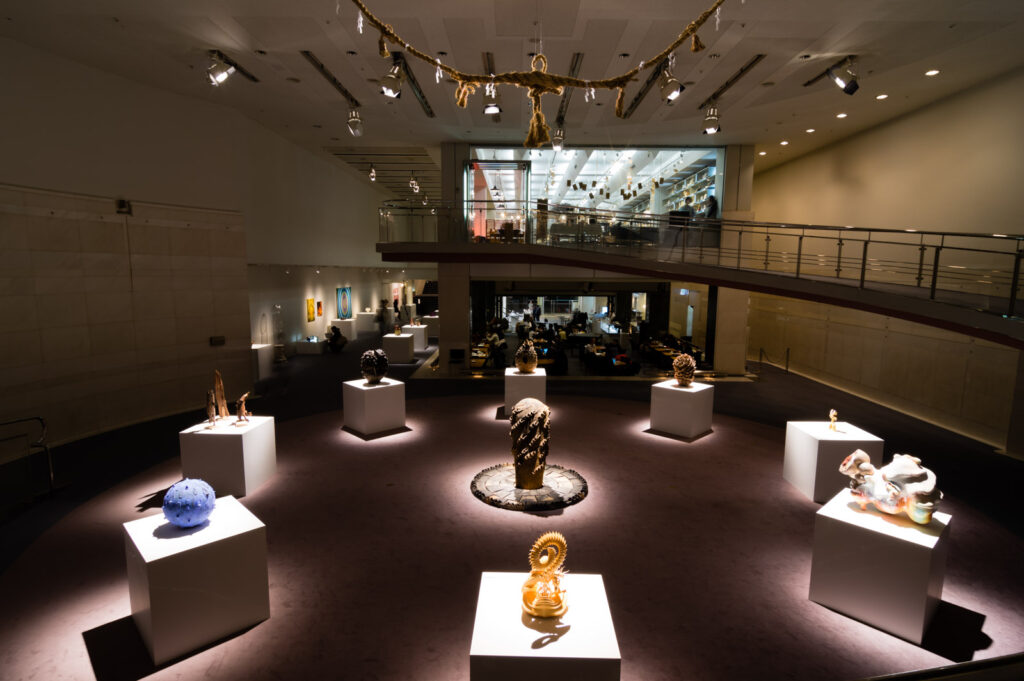
Let’s start with a brief overview of AOJ. There are many contemporary artists who have been influenced by the Jomon. Taro Okamoto‘s “rediscovery” of the Jomon and its recognition as ” Japan’s oldest art form” is well known. But there are many other great artists who have interpreted the influence of the Jomon in their own ways and have been creating diverse artworks. AOJ is an attempt to create a gigantic circle of culture by connecting past and modern times with the power of art, and exhibit those contemporary Jomon artworks in Japan and around the world. Modern values, society, and the economy are crumbling with a thud, and we urgently need a new set of values to replace the modern ones. I believe that what fits into this is the Japanese archaic revival of Jomon and animistic values, updated by technology. Each time I created the layout of the venue, I did so with a sense of casting a spell, using the power of art as a catalyst, so that a more peaceful, tolerant, and artistic society could be manifested.
In 2013, we had our first exhibition at hp Gallery in New York (curated by Riyo Kim, who will be introduced later), and then we had exhibitions at Japan Expo in Paris (2013), Aomori Museum of Art (2014), Spiral Garden (Tokyo, 2015), Denver International Airport (Colorado, USA, 2015), ISETAN The Japan Store (Kuala Lumpur, Malaysia, 2017), and Kioicho Garden Terrace (Tokyo, 2017), and we exhibited at various places.In 2020, the exhibition was scheduled to be held at Stonehenge, but like other art events, it was cancelled due to the COVID-19.
I would now like to introduce the artists and works that have been exhibited at AOJ. My standards for asking artists to exhibit their work are that it must be “Jomon-like” and “edgy”. The Jomon “-like” part is the key. Contemporary Jomon art doesn’t necessarily have to look like doki (earthenware) or use distinctive Jomon patterns, as long as the artist or the spirit that created the work is Jomon.
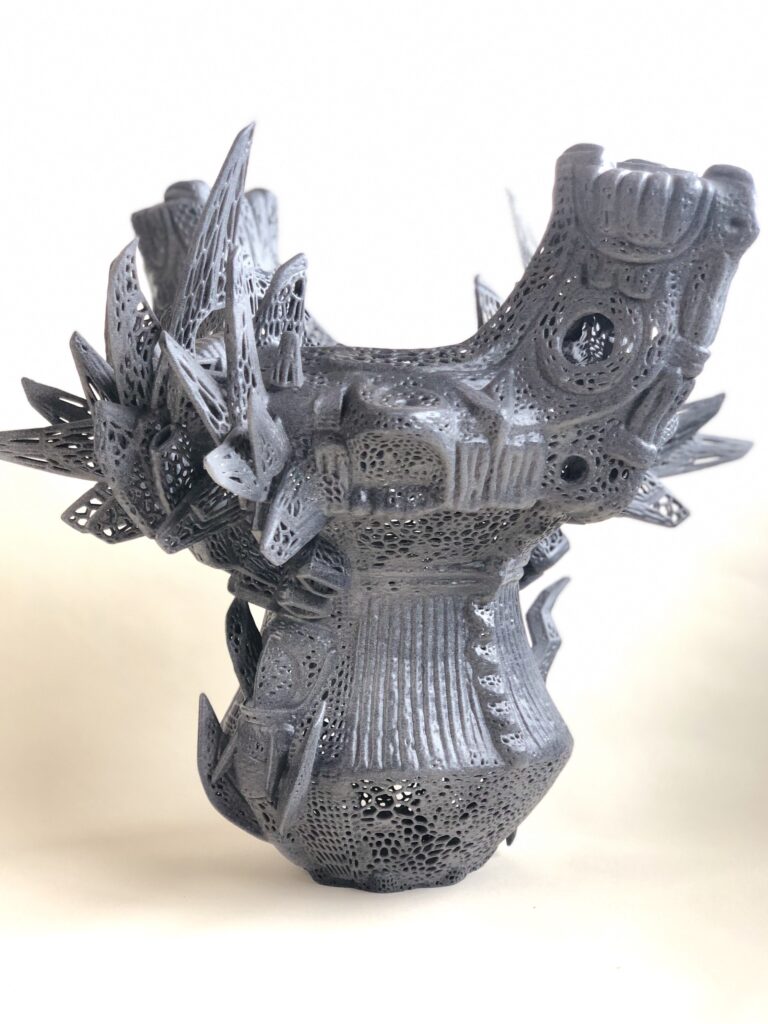
First of all, I don’t mean to brag, but let’s start with the work of “XSENSE”. XSENSE is a collaborative project between me and the artist Yoshinori Sakamaki a.k.a. Sense.(IG:@sense_art_jp) Our goal is to realize a peaceful society and world by integrating technology and art. (artstation) XSENSE have been exhibiting at AOJ since its first show, and I would like to introduce some of my works from there. “Spectrum of Consciousness,” is made by borrowing 3D scanned data of Jomon doki excavated from the Ishinotsubo site in Nirasaki City, Yamanashi Prefecture, and fused it with shapes drawn by Sense and made into 3D by me in computer graphics software, and output them as 3D printed artworks. The concept is that by digitizing Jomon relics, which normally cannot be altered or modified, they can be utilizable more freely as artworks, and that the connection between the ancient and the present can be expressed visually.
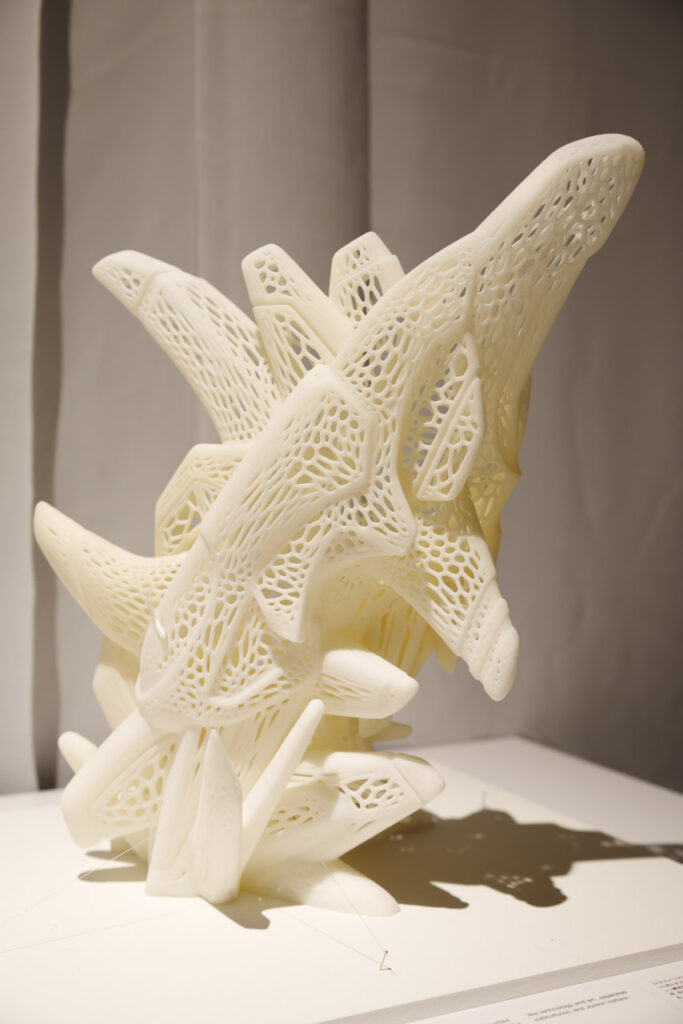
We have been often asked what the shape and character (or rather, the object) of XSENSE means. This is my own personal opinion, but I think that the forms that Sense draws are the result of deconstructing the “kakkoii”(coolness) of Japanese subculture, especially robot design, and reconstructing it abstractly. And I think the subcultural sense of kakkoii originated in an ancient animistic feeling of “awe”, but I will write about it in more detail in coming articles. What both Jomon doki and XSENSE have in common is that they are “proliferative” art. By piling up clay, engraving patterns, and assembling polygonal parts, each simple structure becomes a multilayered accumulation of information.
As I mentioned above, I consider that contemporary Jomon art does not necessarily have to be in the shape of Jomon doki. XSENSE is a Jomon for the future, inheriting the spirit and shape from ancient times, but reconfiguring it in a modern form. And I think the most important part of XSENSE is that me and Sense share the vision of creating a peaceful Jomon style future.

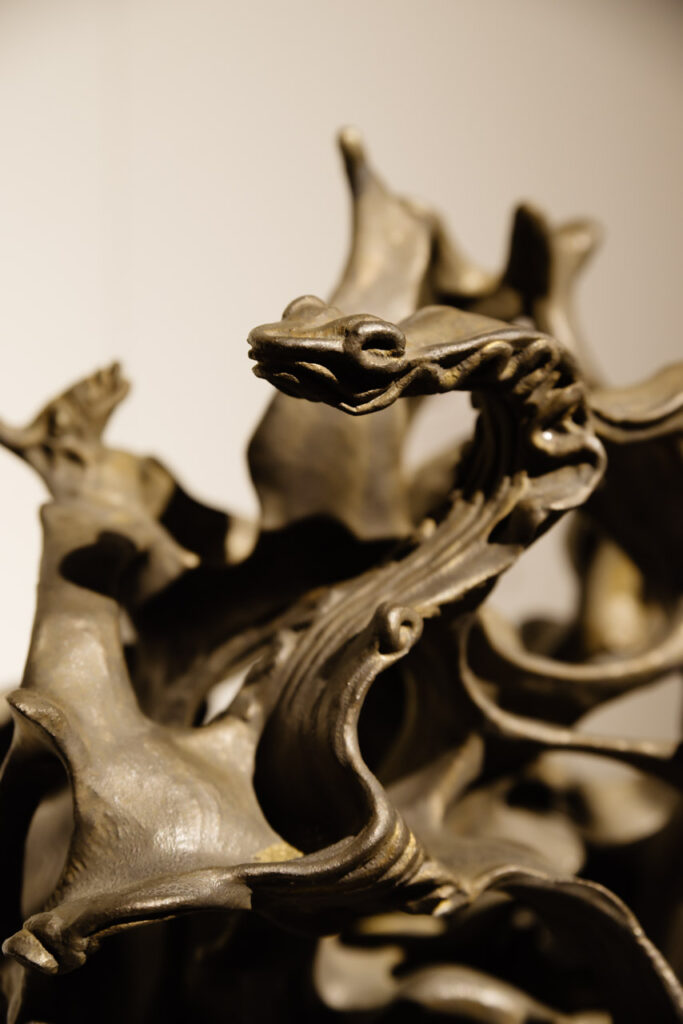
Next up is Ryujiro Oyabu, who is also a member of JOMONISM.(IG:@yaburyu)When he was a child, he used to dig for fossils in the nearby cliffs, and sometimes dug up Jomon doki also. All of his works are excellent, but I consider “The Resonator” to be one of his masterpieces. Modeling backed by authentic skills, a sense of dynamism like a dancing flame. The patterns, matière (*1), and overall atmosphere are definitely Jomon, but if you look closely, you will notice that you have never seen this type of Jomon pottery before.
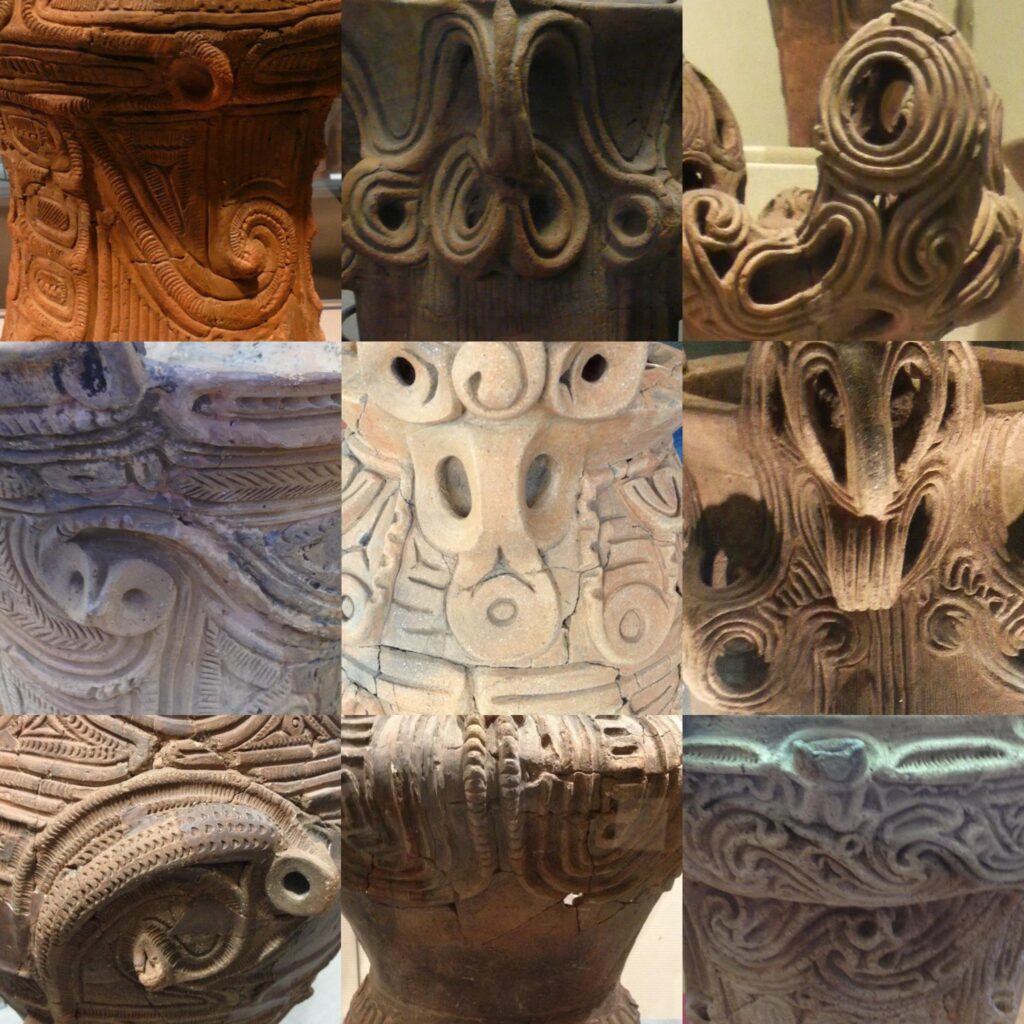
Jomon pottery seems to have been created freely, but each region, village has its own symbolic context (codes). Was it carved as a pattern to express a story passed down in the village? Or is it a calendar? Is it a representation of a spirit? Nowadays, we can only guess at the meaning, but when we look at the earthenware, we notice that there are indeed rules and regulations.
This is a little off topic, but when you look at Jomon pottery at an archeological museum or other such places, you will find that among the pottery that has been excavated from the same site or has the same code, there are one or two pieces that can be called masterpieces, and there is pottery that can be seen as having been made by imitating them. However, the pottery that mimics the code is not very good, which makes me smile seeing the effort of ancient artists. In addition, there are occasionally monstrous-looking pottery from regions that share the same code and have arranged the code too much in their own artistic way.
I’m imagining a story that the creator, who has an artist’s temperament, is furious about having to keep making the same patterns, and creates his own original earthenware. For this reason, he is excommunicated by his master, and sets out on a journey to compare his skills with pottery makers in other regions… lol
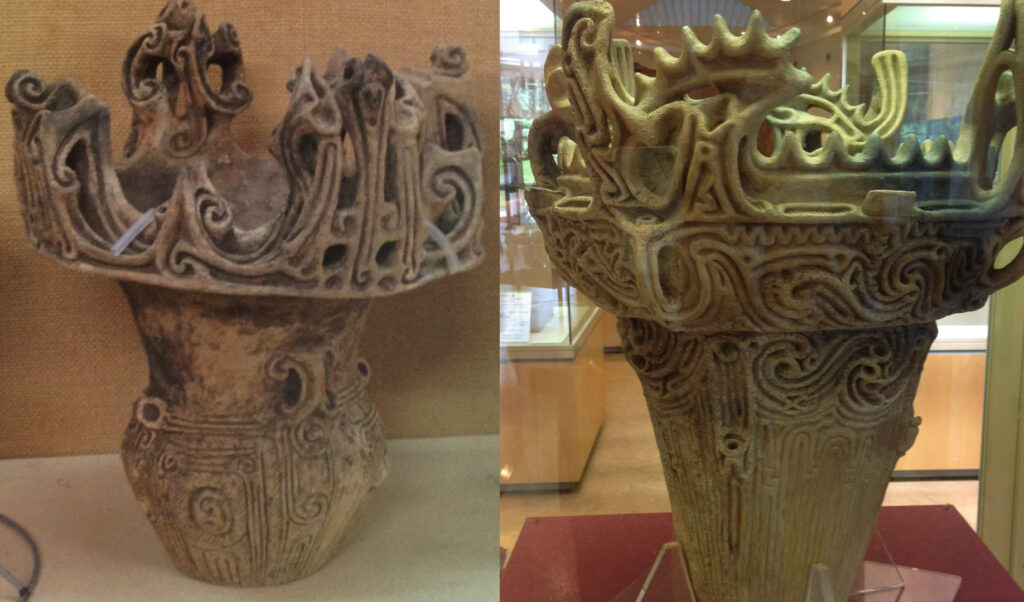
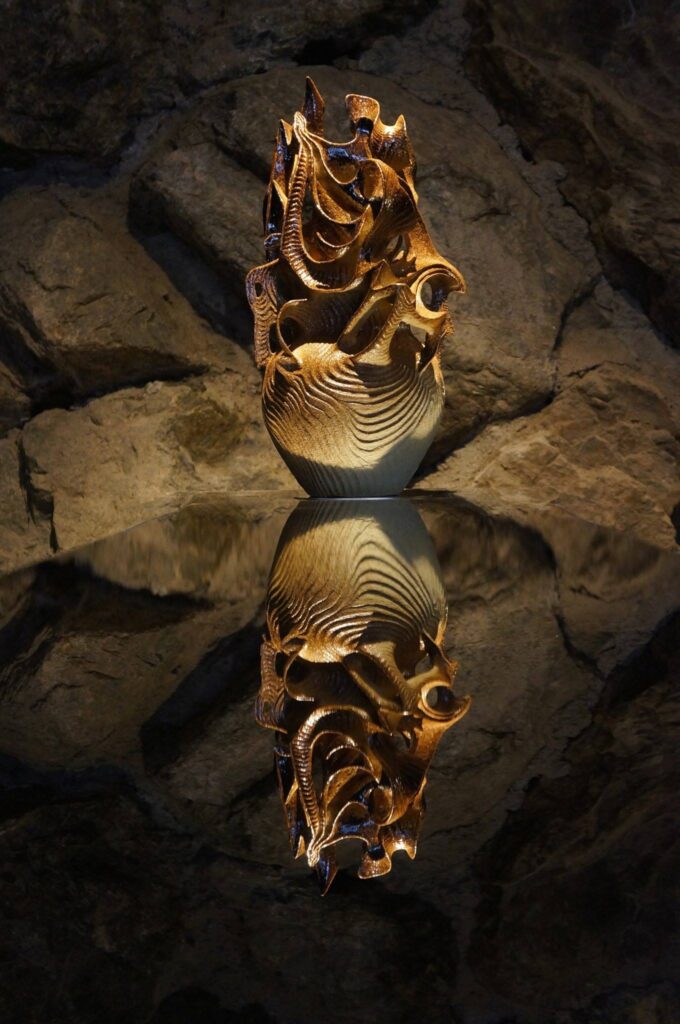
Back to the topic at hand, Oyabu is making doki, but the “code” itself is very new, and the code is more freestyle and modern. Since they are made by artists living in the modern age, it is only natural that the context of the patterns/shapes would be modern, but this is fused with the primal material of soil = clay to create a excellent balance that combines the sense of Oyabu’s works, sophistication and roughness.
Technically, Jomon pottery is fired in noyaki, open-hearth firing(*2), while modern pottery is fired in a kiln. This also makes a difference in the shapes that can be made and the matière when it’s finished. Although Oyabu’s work is in the category of pottery made from the same clay, it is an expansion of Jomon pottery and Jomon culture using modern sensibilities and techniques, and a pursuit of the Jomon in contemporary pottery.
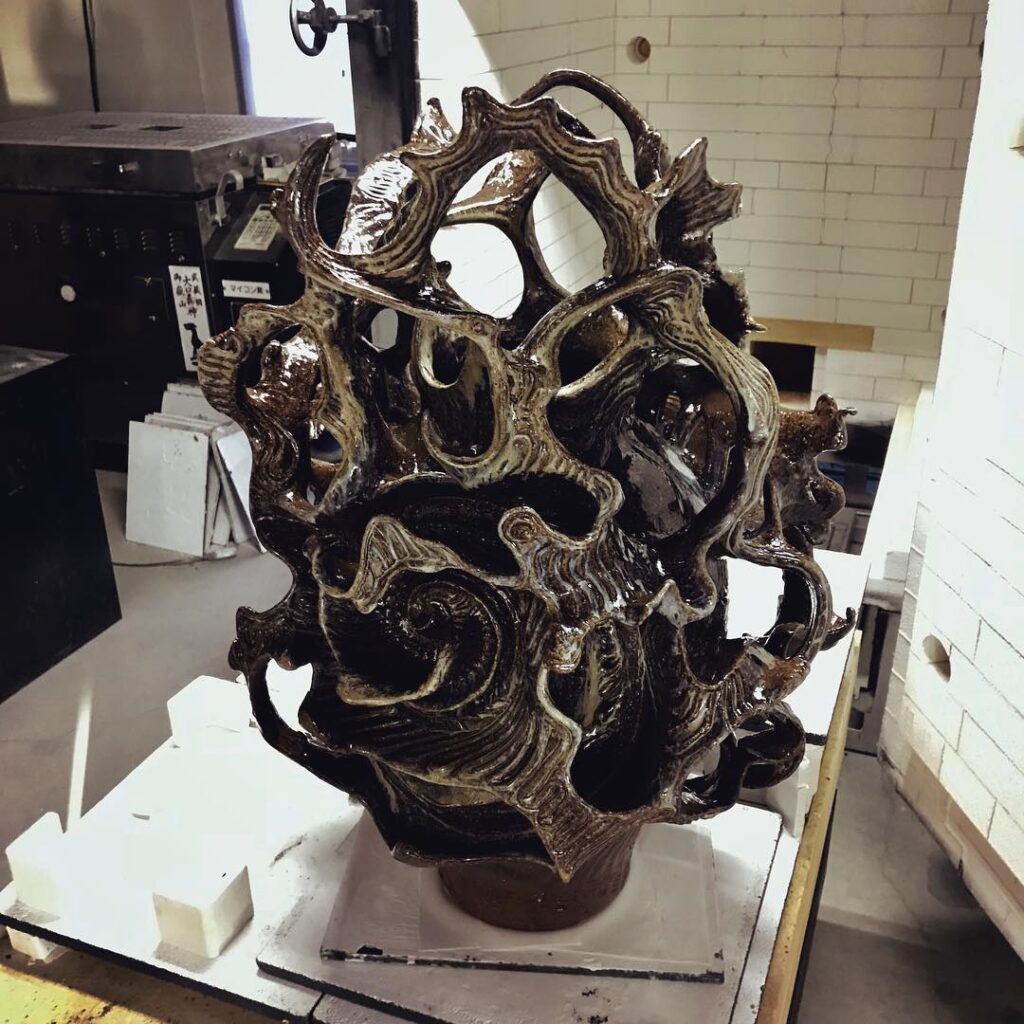
At this pace, it’s going to be difficult to introduce all the artists…. But next time, I will continue to introduce the artists/works that participated in AOJ and write about my JOMON concept.
matière:Material. A texture. In art in particular, the skin of a screen created by various materials and their various uses, and the mental impression given by the sense of material and texture.
The term “Noyaki”(open-hearth firing) refers to a method of burning pottery by building a fire on the ground or in a shallow pit dug into the ground and using the heat from the fire. For more information
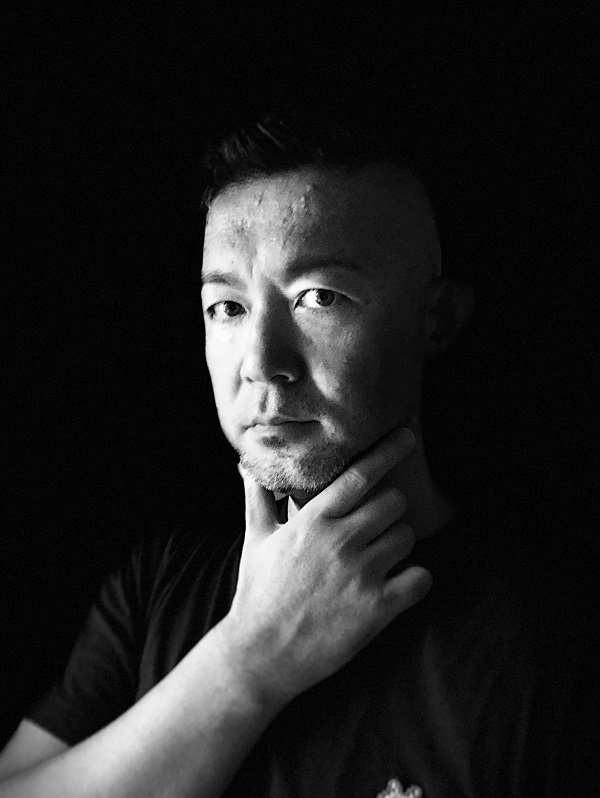
Taketo KOBAYASHI Post-digital artist
ARTSTATION
Taketo Kobayashi (artstation.com)
Instagram ID
@humanoise
After having experience of 3D graphics and animation at Tokyo Institute of Technology creative laboratory, and Gonzo Co., Ltd., Taketo started his own project as an artist. Using digital technology like CG, 3D printing as his “brush”, Taketo creates a wide variety of artworks from 3D printed sculpture to animation. In a collaboration project XSENSE, Taketo utilizes CGI in street art to create murals(Denver, CO, USA), also using his unique style animation for stage design and collaborated with contemporary Noh theatrical group. In addition to creating his own artworks, Taketo curates the group art show “ARTs of JOMON” hosted by Japanese non-profit JOMONISM, keep introducing contemporary artists/artworks influenced by ancient Japanese Jomon culture.(Aomori Museum of Art / Spiral Garden / Denver International Airport / Kuala Lumpur)
It is Taketo’s mission to make invisible things, emotions, energy, next dimensions of consciousness into “shapes”.
Project/Art history(excerpt)
PROJECTS Digital G-O-D, UltraSuperNew gallery, Singapore, Jan 2020
Haw Par Villa RE•MIX
Chinese Cultural Centre, Singapore , Jan 2020
”Light to Night Festival” Projection mapping at Asian Civilization Museum, Singapore , Jan 2020
A SIGN OF THE TIMES EXHIBITION, Singapore , Jan 2019
”ARTs of JOMON” exhibit @ISETAN KL, Malaysia , Aug 2017, curation&direction
“Colorado Crush”, a mural festival in Denver, CO. Sept 2016, created artwork
“DMS” Collaboration with Canon June 2015, created&exhibited 3D printed prosthetic leg
”Oakley Exhibition” Exhibited artworks at Oakley store Harajuku, Tokyo, Oct 2014
AWARDS “Eisen Herz” Ufab Global Creative award Finalist. 2016. 3D printed cover for “Tamiya mini 4WD” using generative design
“More Than Human type-Unicorn” a 3D printed prosthetic leg. Ufab Global Creative award Finalist. 2015
“SC1-EXP” Zushi International Projection Mapping Competition, Grand Prix. 2014
“Yakushi-Nyorai”(2013)
3DCG model for 3D printing. Winning work at Digital modeling competition held by Japan Society for Graphic Science
Original CG animation ‘Matsuri’(May 2010)
Design, modeling, production coordination. A CG animation based on Japanese ‘Jomon’ culture. Created for promotion of Aomori Prefecture. Accepted at Siggraph Asia 2010. (On VIMEO: https://vimeo.com/25144961)